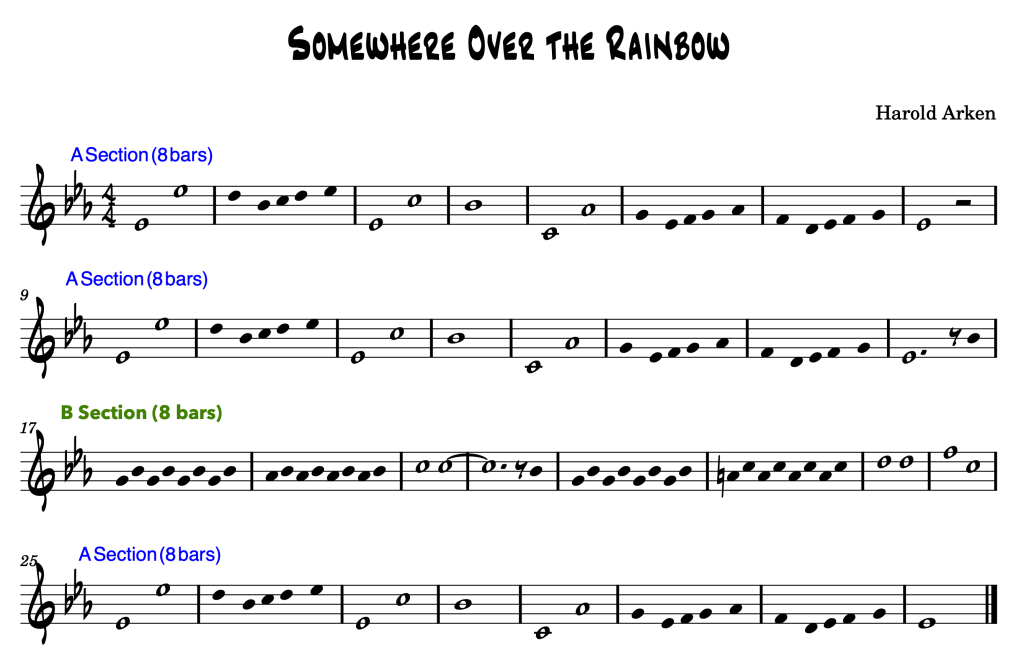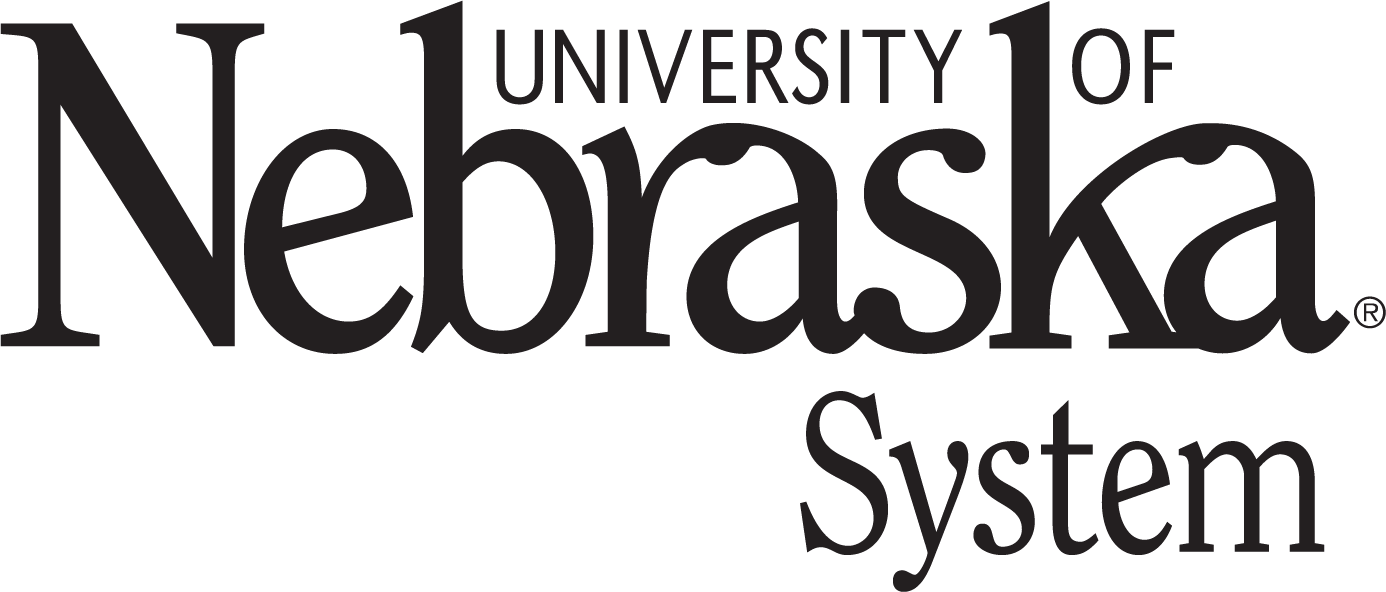Project 6 Table of Contents
Project 6: Overview – Melody (Contour)
Melody
We can measure the highness or lowness of a sound by counting its vibrations or cycles per second (cps). While sounds can and do exist at all frequency levels, the majority of music we listen to typically uses discrete frequencies. We typically think and hear melody as ‘the tune’ – and in lots of pop music, it is the melody that also has lyrics.
In the expressive sense, we can view melody as a succession of pitches, again with a degree of structure and contrast as well as expectations. We usually view melody relative to one pitch which becomes a standard, or ‘home tone’. This home tone (referred to as the tonic) is what is meant when we talk about a melody being in a certain key. The concept of a key or tonic is simply a form of structure – call any pitch the tonic, and immediately there exists a set of possible pitches to use in creating a melody.
An important aspect of melody is that of ‘contour’ – the overall shape of a melody. We actually hear shape and contour more than individual notes. To demonstrate the strength of contour, here’s a well-know tune played with the correct pitches, but the contour (shape of the melody) has been inverted.
In the “Original Song” version, the overall contour is kept intact and you will immediately recognize the tune…
| Mystery Song (listen to this version first!) | |
| Original Song (in multiple octaves) |
Summary: Write a melody that uses 32-Bar Form (AABA).
Features of this project
- Treble Clef (any pitched instrument you’d like)
- 32 Bars
- Form is A A B A (each section = 8 bars)
- The A sections could be exact copies of each other OR have slight variations.
- The B section should provide contrast and yet “fit” with the A section idea.
- OPTIONAL: if you’d like to add lyrics go ahead!
- REQUIRED: Provide a Title for your Melody and your name as composer!
How To… Project 6
Repetition in a melody is used to provide unity and form. Of course too much repetition will result in a tune that is not terribly interesting so over time, various “approaches” to the structure of melody have proven to be tried and true! One such form is “32-bar form”.
As the name implies, 32-bar form tunes have 32 bars (measures) broken into 4 sections (8 bars each). This form, also known as “American Popular song form” or “ballad form” can be described as 4 eight-bar sections as follows:
| A | A | B | A |
The initial 8 bar section and the final 8 bar section are often exact copies where as the 2nd A section might have a slight variation. The B section provides some kind of contrast (usually in the harmony used in the tune).
There are thousands of examples of 32-Bar form! (That actually is why a default document in MuseScore is 32 measures long!)
Let’s take apart Somewhere Over the Rainbow, from the 1939 film Wizard of Oz.
Here’s the tune, without stems, to help focus on the contour of the tune – I’ve also made sure each line is exactly 8 bars long.

It is no accident that the overall shape of the opening three measures looks like a rainbow! The initial leap of one octave is a very distinctive aspect of the tune and is a reoccurring idea. Note also that the three A sections are virtually identical (the ONLY difference is the 8th bar of each section – compare bar 8, 16, and 32).
The B section has a little more activity and a smaller contour shape (no large leaps/skips)
Also note that often in 32-bar form, each 8 bar section can be broken down as “4 + 4”. Here’s a video where I’ll play the tune by jumping around to demonstrate how much repetition there is the tune! To help you hear this, I’ve also changed timbres for each line:
- Piano: bars 1-8
- Electric Piano: bars 9-16
- Vibraphone: bars 17-24
- Piano: bars 25-32
Project 6: Practice Sessions
Practice Sessions
Use MuseScore’s copy/paste and repeat features to help create this project. Because of how 32-bar form works, you are actually ONLY creating 16 bars of original content! (8 bars for A, and 8 bars for B).
Here’s a practice session that demonstrates all of this!
Extra Resource: Lyrics
Creating Lyrics
In MuseScore, lyrics are typically added after notes have been entered. For a melody line, any note sung could have a single word, multiple words, or perhaps a single syllable. The MuseScore handbook has a chapter on lyrics but here is the summary version…
- Select the note that will have the initial word of the lyrics
- Enter Lyrics mode (Mac: Cmd+L); or from the main menu, select Add→Text→Lyrics;
- Type the first word/syllable and then…
- Space for the next word (and note) OR
- Hyphen to the syllable to the next syllable (and next note)
- Use the underscore as an extender (for a word sung with several notes)

